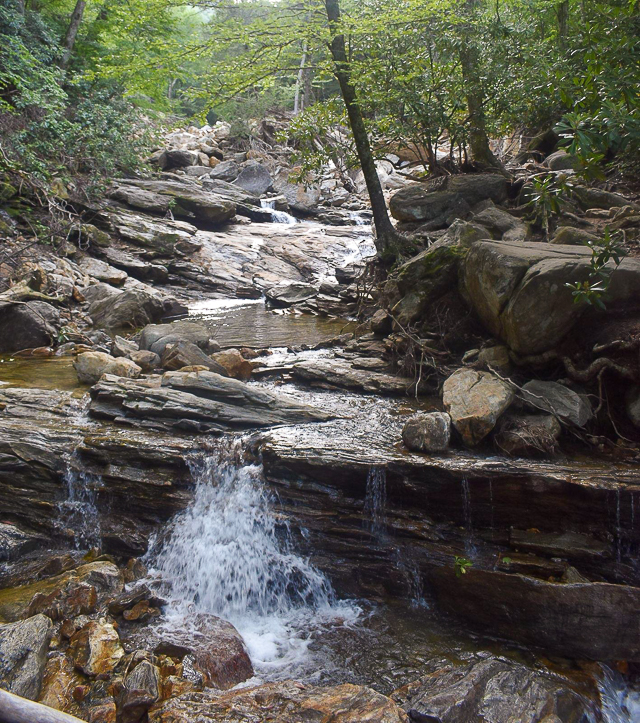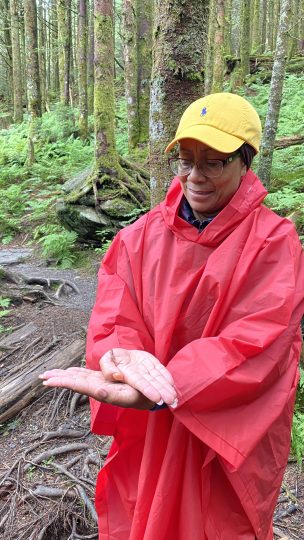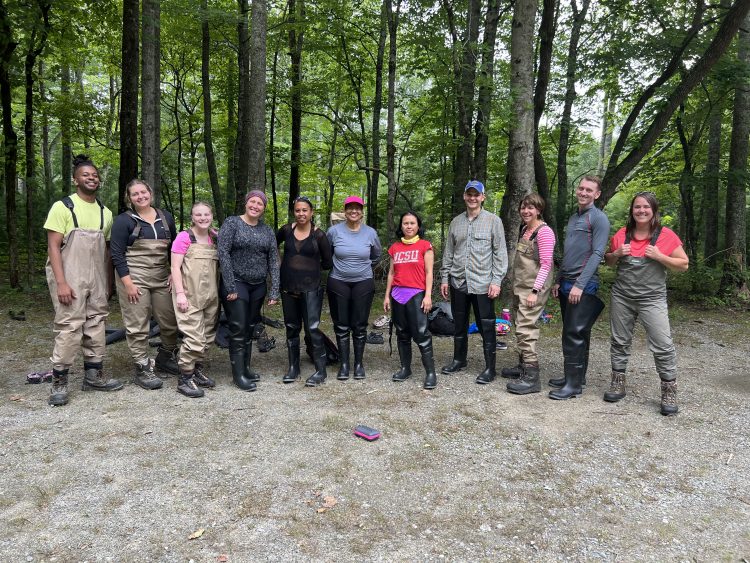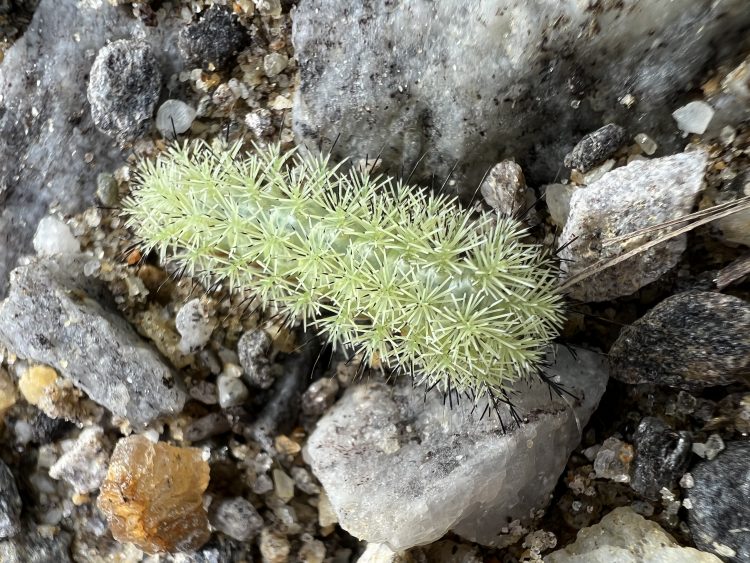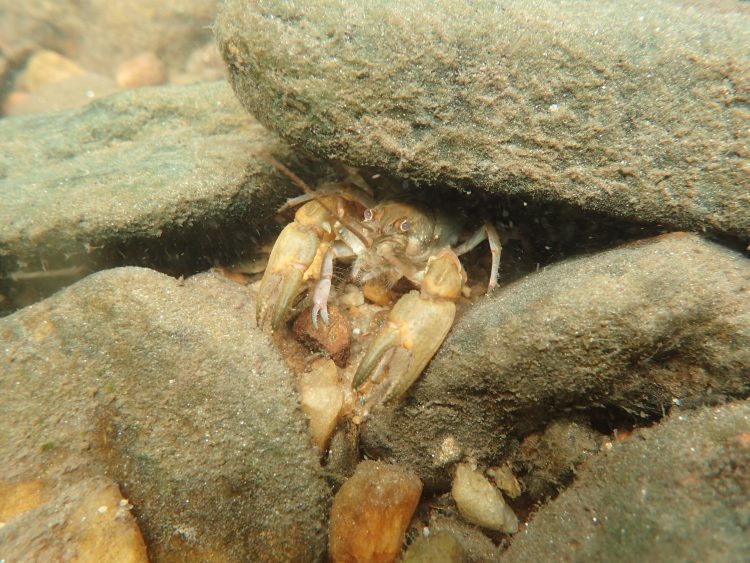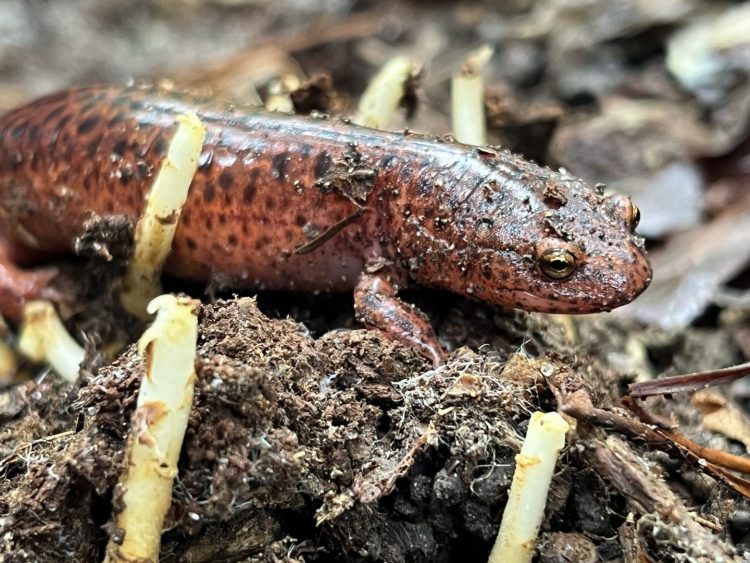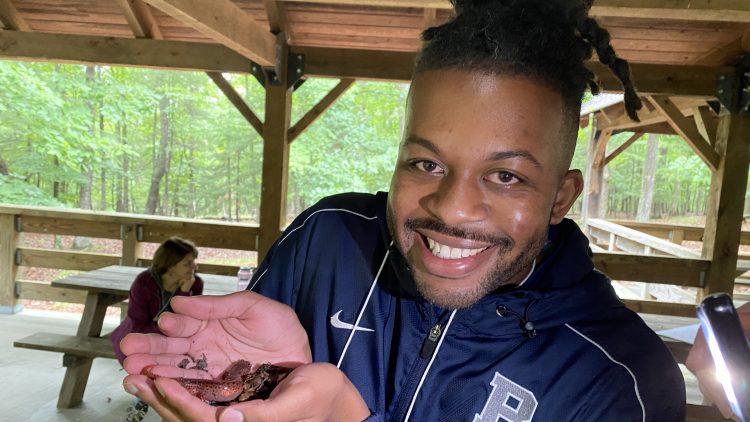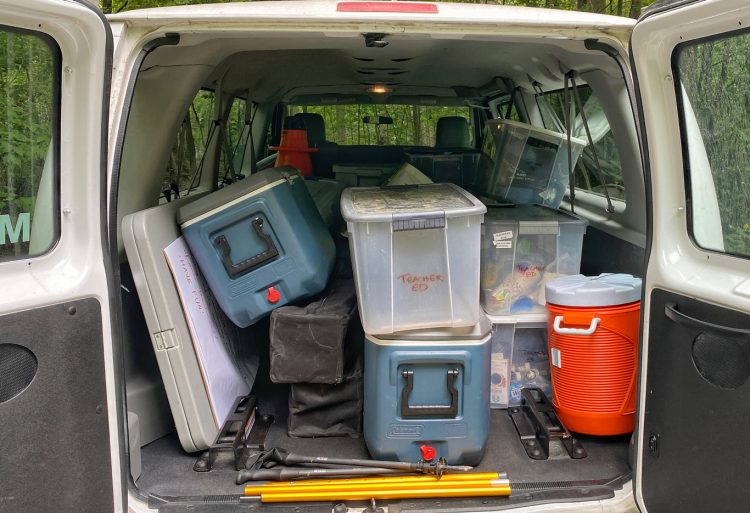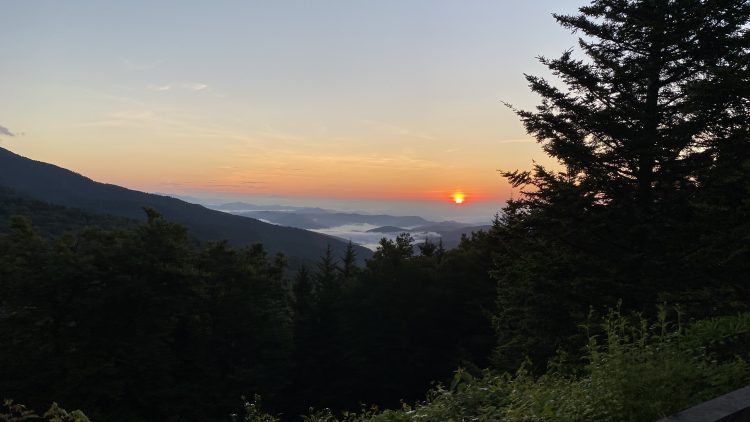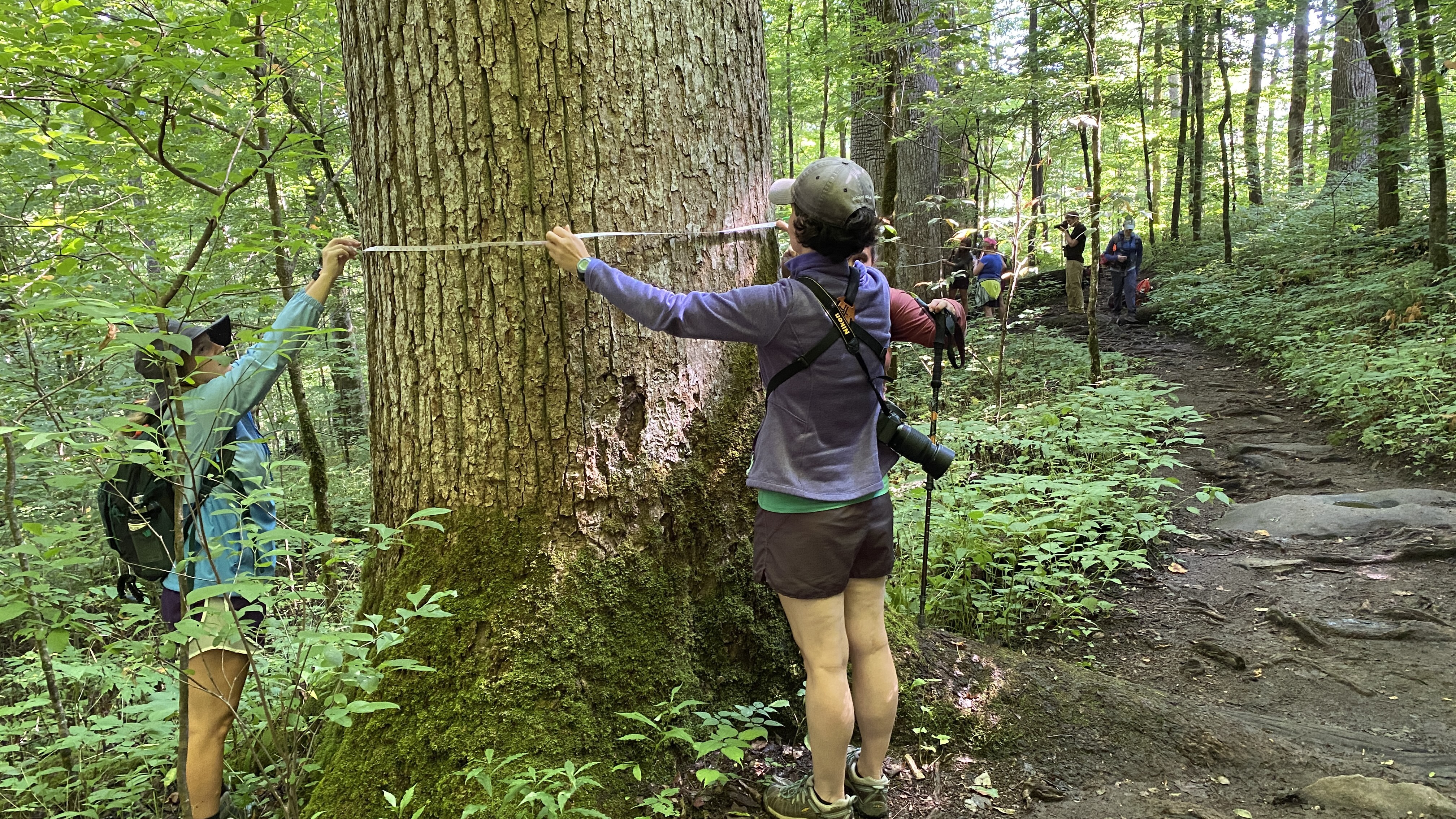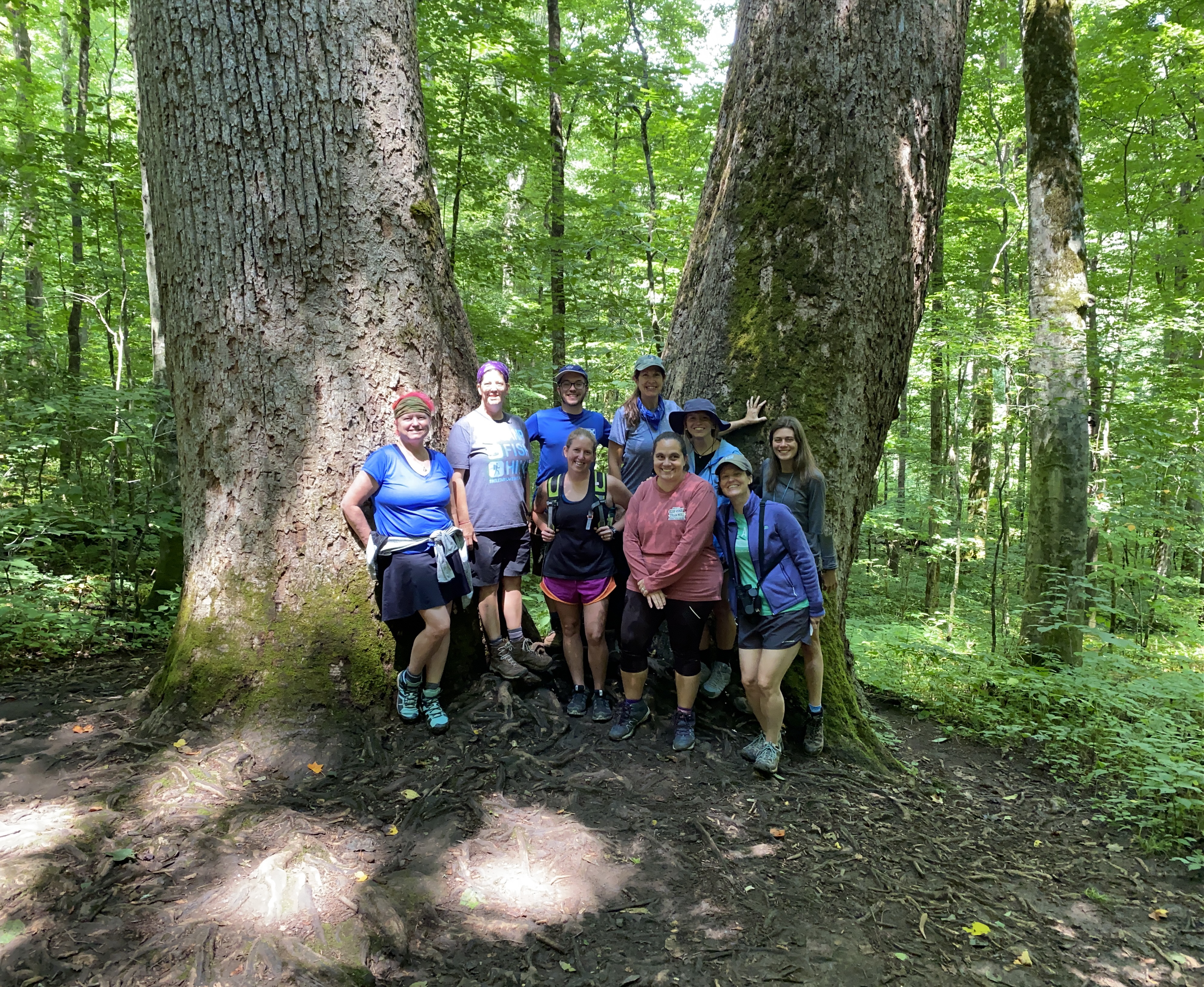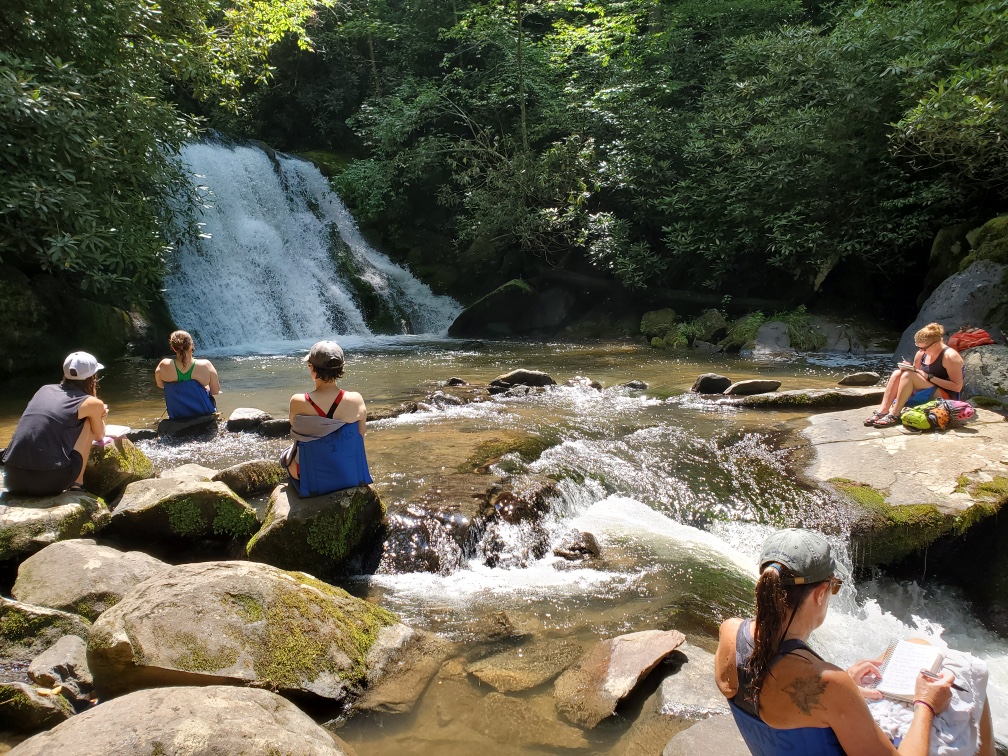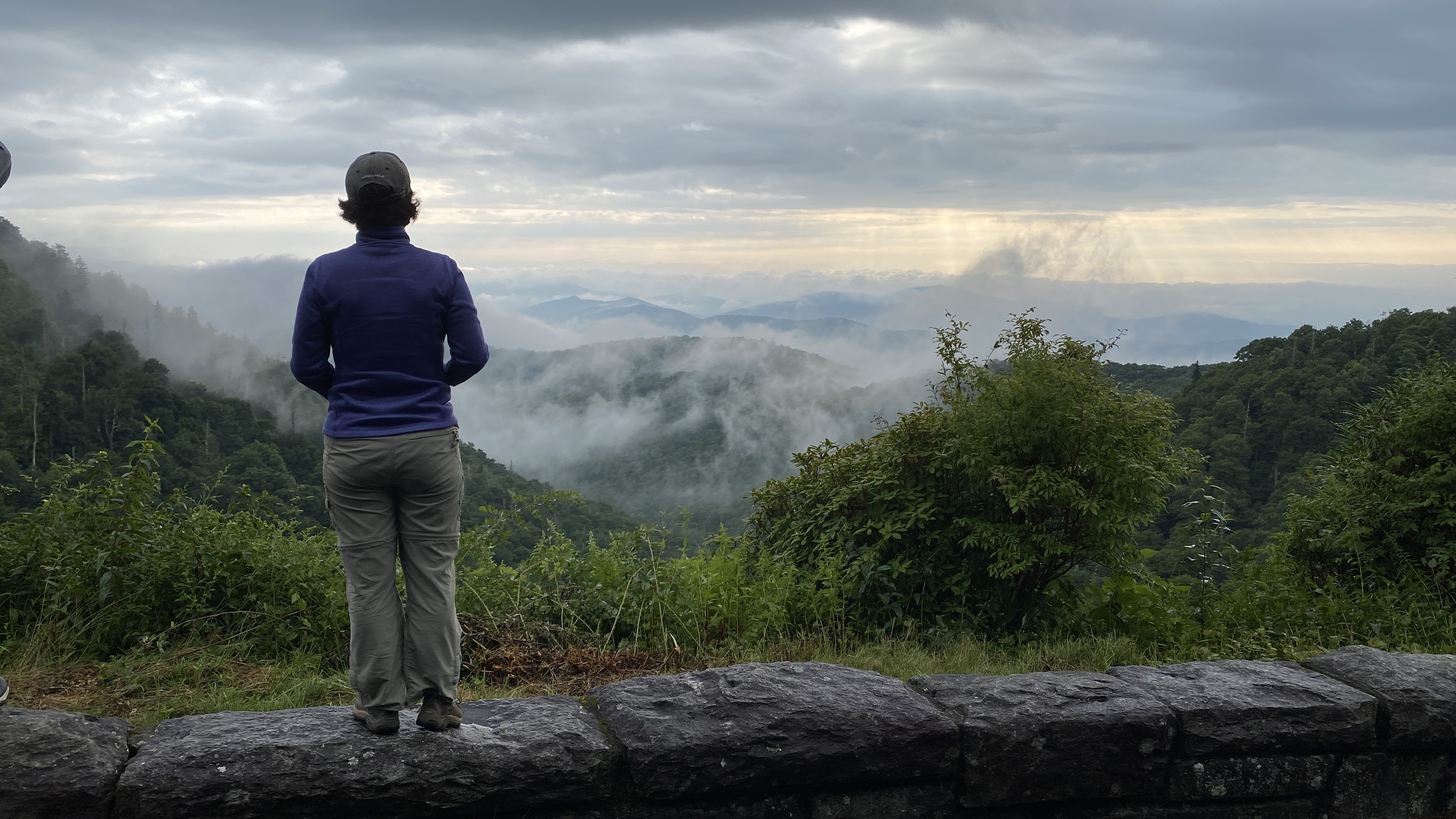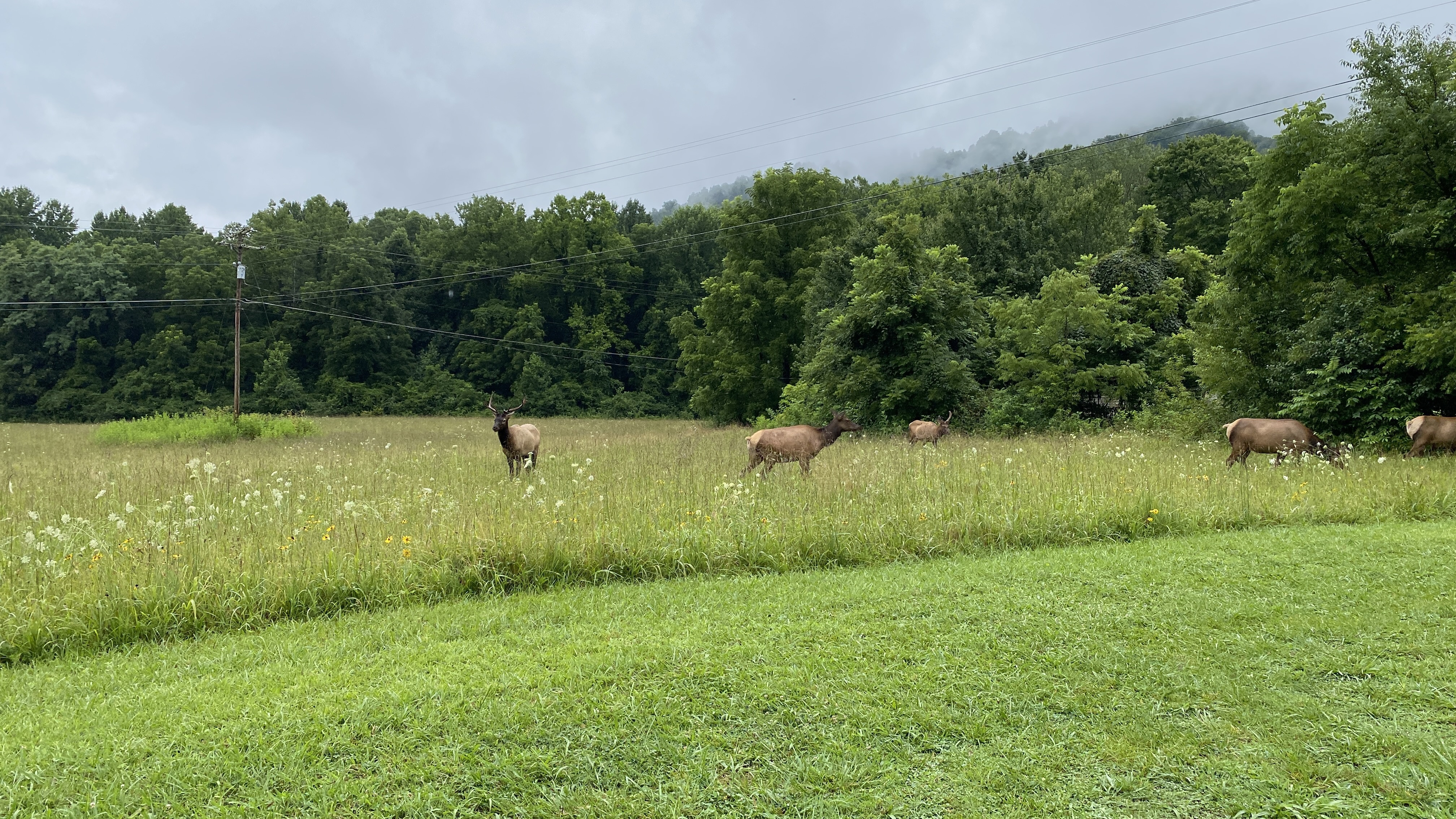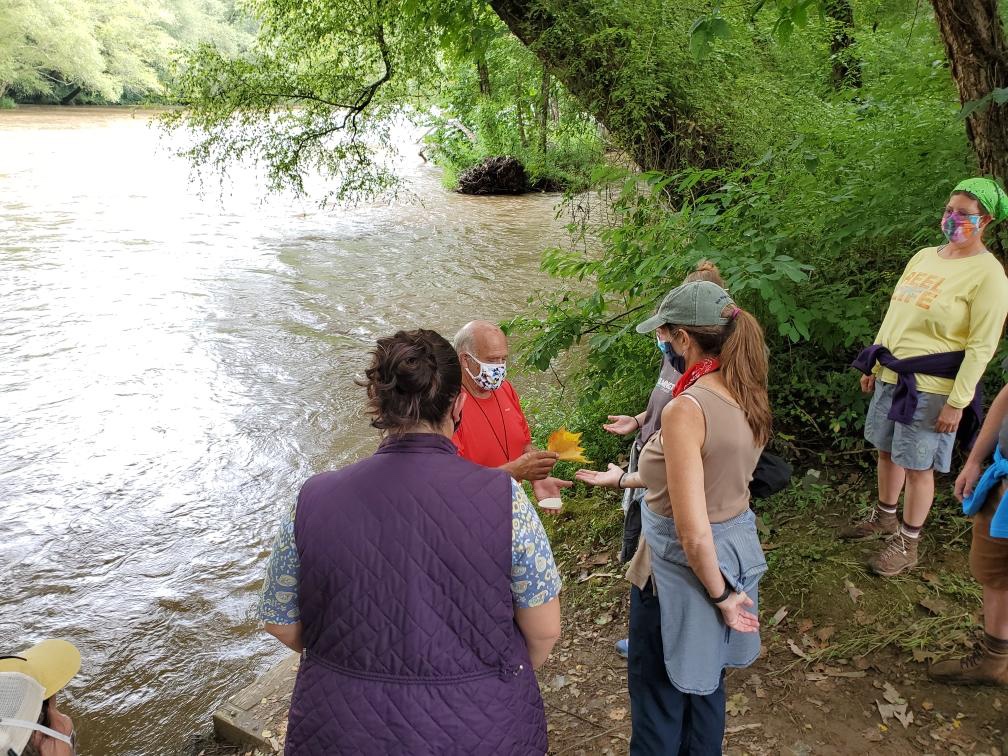“Twas the Night Before the Yurts”
July 17, 2022 - Comments Off on Twas the Night Before the Yurts
Twas the day before the yurts when all through the mountains,
the teachers were packing and filling up water from water fountains.
The clothes were so smelly, the boots oh so dirty,
but the smiles of each teacher was quite bright and purty.
First on the schedule was to drive the rest of the Parkway,
and on our way we realized, we only have two nights left to stay!
We explored through the Smokies in hopes to find elk,
when what to our wandering eyes should appear,
but an elk similar to a reindeer!
Back in the van on the drive to meet Freeman Owle,
we had 30 more minutes to see a bear and may hear its growl?
Alas we have made it down to the water, the land of the Cherokee,
to watch all the children play with glee.
Freeman Owle began to tell stories of the past,
sharing all the traditions and celebrations in hopes that they last.
He gave us a tour as we drove through the land,
and brought us to the burial site of those who lived beforehand.
Freeman cared so much about his people
and challenged the group of teachers to have the vision of the eagle.
Up the steep hill, our view at the yurts was so nice
and for dinner we shared great conversation over rice.
Reflecting on our day we realized we now had one day left,
so we planned to make it the best one yet!
See photos of our day on our Instagram feed @ncmnsteachered


